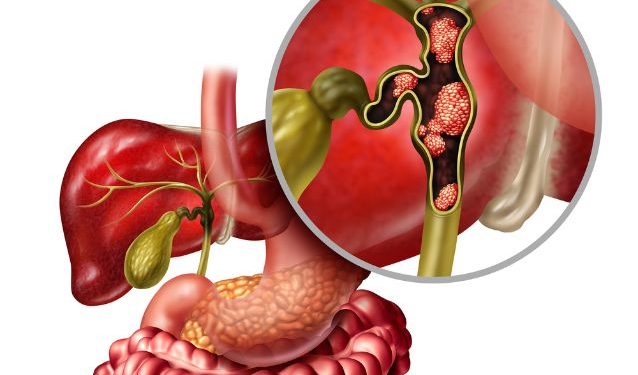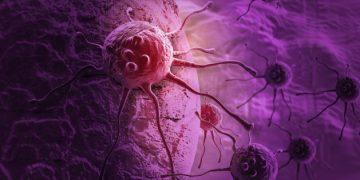Cancer is a group of abnormal cells that grow out of control and destroy nearby tissue (malignancy). It can also spread (metastasize) to other parts of the body.
Your bile ducts are thin tubes that carry a fluid called bile from your liver to your gallbladder and the first part of your small intestine, where it helps your body digest fats. A tumour (cancerous) in your bile duct can grow into and destroy surrounding tissue and cause you to have symptoms such as yellowing of the skin, loss of appetite and weight loss.
The bile ducts are surrounded by a layer of cells, or epithelial cells, which line the inside of each duct. These cells have a special function, which is to help the bile travel from your liver and gallbladder into your small intestine.
Cholangiocarcinoma occurs when bile duct cells start to grow out of control, forming a tumour. Symptoms include jaundice, or yellowing of the skin and eyes.
There are several types of cholangiocarcinoma, and they differ in the way they start and spread. These tumours can be found inside or outside your liver, depending on where they start.
Intrahepatic bile duct cancer: This type of cholangiocarcinoma begins in the bile ducts that are inside your liver (intrahepatic). It accounts for about 10% of all bile duct cancer cases. It is rare and often mistaken for liver cancer, but can be very dangerous if left untreated.
Perihilar bile duct cancer: This type starts in the area where your right and left bile ducts meet and leave your liver (the hilum). It is the most common form of bile duct cancer and accounts for around 50% of all cholangiocarcinoma cases.

Distal bile duct cancer: This type, which starts farther down the bile duct, closer to your small intestine, makes up 20 to 40% of all bile duct cancers. This is a more treatable type of bile duct cancer than perihilar bile duct cancer.
These tumours are more likely to spread (metastasize) than perihilar bile-duct cancer, so they usually cause you more severe symptoms. They can also be more difficult to treat, as they can sometimes spread to the lymph nodes in your abdomen and the liver.
Treatment depends on how far the cancer has spread and what other treatments you have. Doctors can use chemotherapy, radiation and surgery to kill cancer cells in your bile ducts. They might also recommend a liver transplant, which is a very rare but sometimes effective treatment for some people with bile duct cancer.
Chemotherapy is the most effective treatment for bile duct cancer, but it can be difficult to take. It is usually taken by mouth or through a shot into a vein.
Radiation therapy is another option, and doctors can use it to treat your bile ducts, lymph nodes or other parts of the liver that have been affected by your cancer. It can also be used to kill any cancer cells that have spread beyond your bile ducts.









